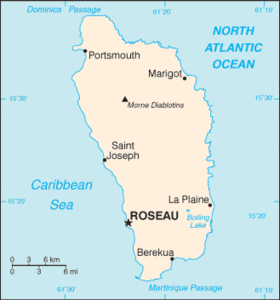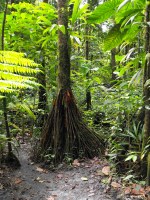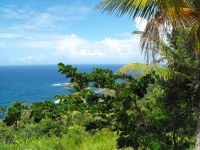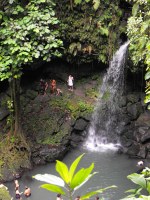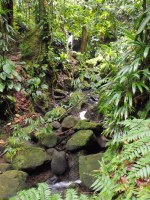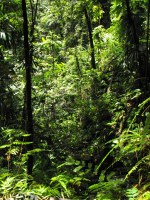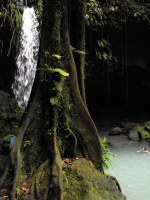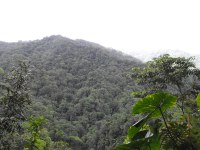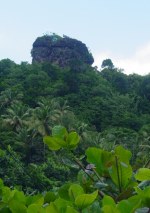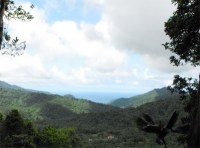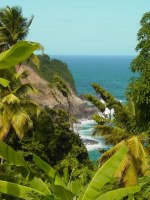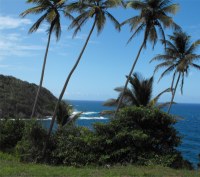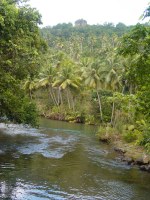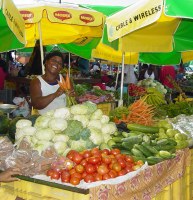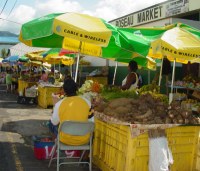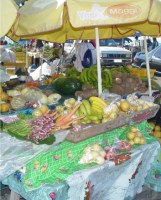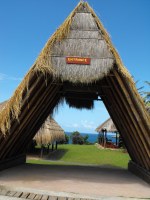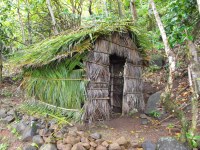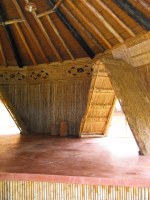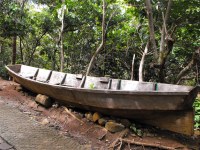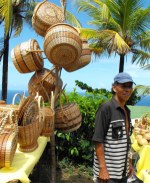
|
|
| Dominica is largely covered by rainforest
and is home to the world's second-largest boiling lake. Dominica
has many waterfalls, springs, and rivers. Some plants and animals
thought to be extinct on surrounding islands can still be found
in Dominica's forests. The volcanic nature of the island and the
lack of sandy beaches have made Dominica a popular scuba diving
spot. Dominica is home to several protected areas, including Cabrits
National Park. Dominica has 365 rivers. |
|
|
Morne Trois Pitons National Park
is a tropical forest blended with scenic volcanic features.
It was recognized as a World Heritage Site on April 4, 1995.
Within the Caribbean, it shares this distinction with historic
World Heritage sites in St. Lucia (2004), Saint Kitts (1999),
Hispaniola (Dominican Republic [1990]/Haiti [1982]) and Cuba
(multiple).
|
|
The Commonwealth of Dominica is
engaged in a long-running dispute with Venezuela over Venezuela's
territorial claims to the sea surrounding Isla Aves (literally
Bird Island, but in fact called Bird Rock by Dominica authorities),
a tiny islet located 70 miles (110 km) west of the island of
Dominica.
The only two major cities are Roseau and Portsmouth.
|
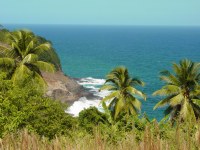 |
The flag
The flag's elements have symbolic meanings. The parrot
is Dominica's national bird, meant to inspire citizens to soar to
achieve their highest goals. In addition to representing the island's
parishes, the stars also symbolise hope and equality.
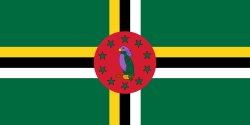 |
The combined lines form a cross,
reflecting Dominica's Christian faith, and the three lines individually
represent the Trinity. The flag's colours were also chosen for
their associations: green - the island's verdant landscape; red
- social justice; yellow - sunshine, agriculture; black - earth,
African ancestry; white - clear waters, purity. |
The flag, adopted in 1978, features the national bird
emblem, the sisserou parrot, which also appears on the coat of arms
granted July 21, 1961. This parrot is unique to Dominica. It is an
endangered species; only a few pairs remain. The green field represents
the lush vegetation of the island. The cross represents the Trinity
and the Christian faith, and its 3 colors recall the native Indians,
the fertile soil, and the pure water. The 10 stars stand for the 10
parishes (St. Andrew, St. David, St. George, St. John, St. Joseph,
St. Luke, St. Mark, St. Patrick, St. Paul, St. Peter) and the red
disk for social justice.
The Carib Territory
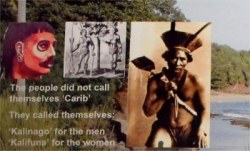 |
The former indigenous people of Dominica, the Arawak people,
were expelled or exterminated by Caribs in the fourteenth century.
The Arawaks had been guided from the waters of the Orinoco River
to Dominica and other islands of the Caribbean by the South Equatorial
Current. These descendants of the early Tainos were overthrown
by the Kalinago tribe of the Caribs. |
|
The Caribs arrived on the island in special boats which they
are still making at their own territory on the island. Christopher
Columbus arrived at this island on Sunday, November 3, 1493.
He and his crew soon left the island, having been defeated by
the Caribs.
|
|
|
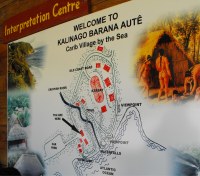
|
In 1627 England
tried and failed to capture Dominica. In 1635 the French claimed
the island and sent missionaries, but they were unable to wrest
Dominica from the Caribs. The French abandoned the island, along
with the island of Saint Vincent, in the 1660s. |
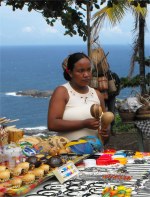 |
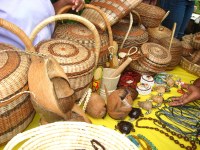 |
|
For the next hundred years Dominica remained isolated,
and even more Caribs settled there after being driven from surrounding
islands as European powers entered the region. France formally ceded
possession of Dominica to the United Kingdom in 1763. The United Kingdom
then set up a government and made the island a colony in 1805. The
emancipation of African slaves occurred throughout the British Empire
in 1834, and, in 1838, Dominica became the first British Caribbean
colony to have a Black-controlled legislature. In 1896, the United
Kingdom reassumed governmental control of Dominica turning it into
a crown colony. Half a century later, from 1958 to 1962, Dominica
became a province of the short-lived West Indies Federation. In 1978
Dominica finally became an independent nation.
Click to visit the
Carib Village.
|
|

